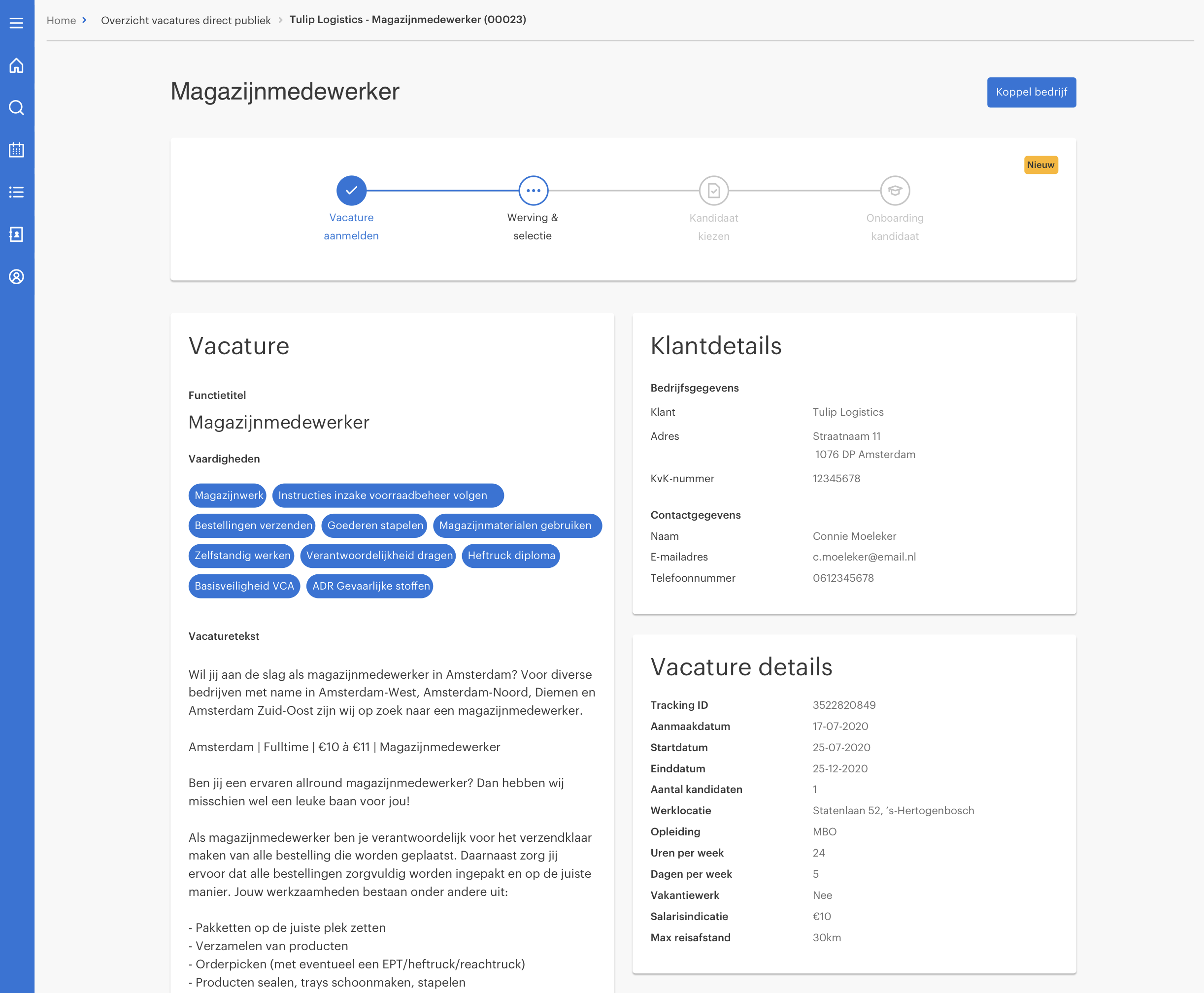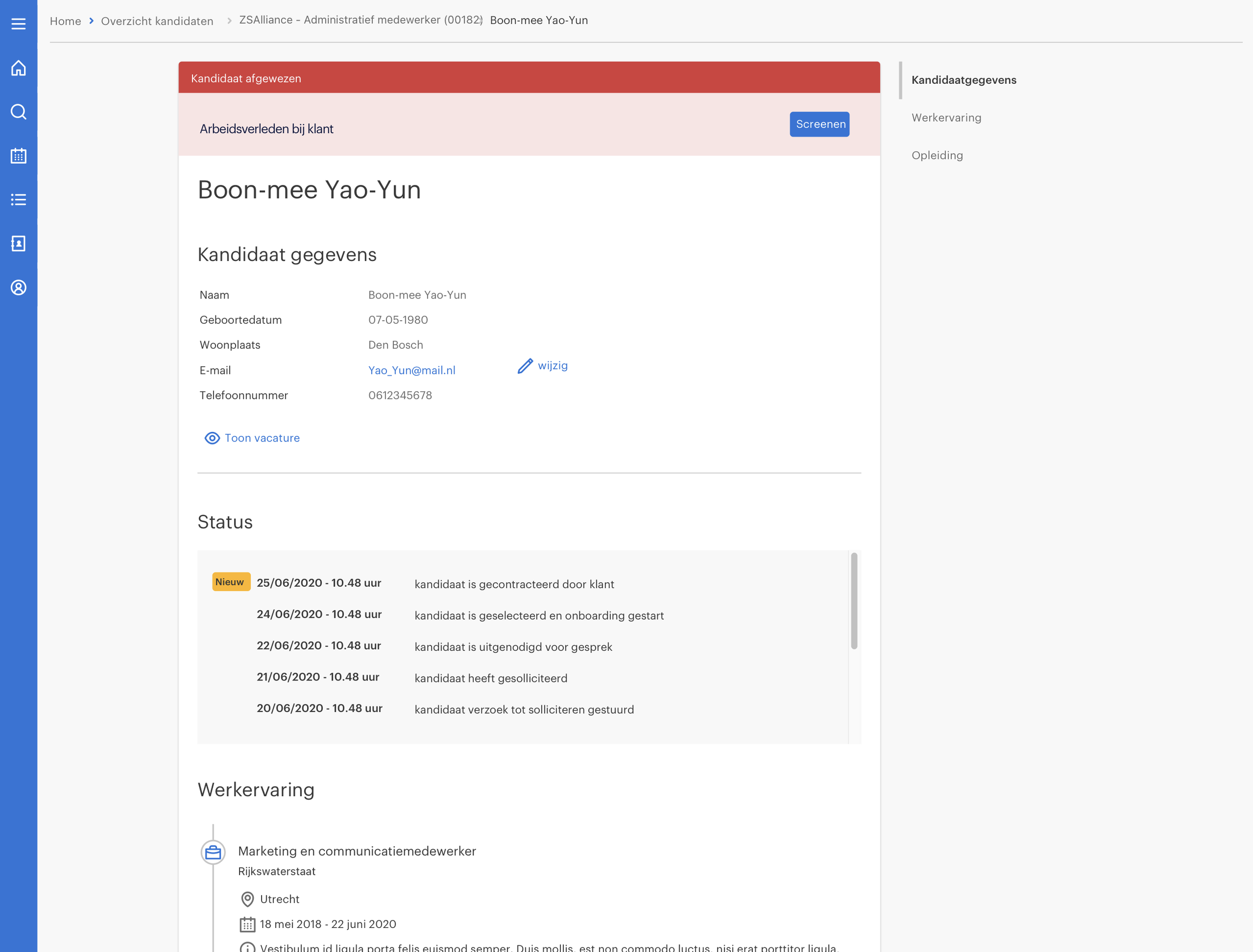Internal Tool
(Business Activity Monitor)
For this project, I designed a crucial internal application that forms the core of our business operations. The platform was specifically built for our mid- and back-office staff and consultants, with the goal of centralizing the management of all incoming client requests. This project was crucial for optimizing our teams' workflow and improving the overall quality of our service delivery.
The platform facilitates essential tasks such as screening job descriptions, proposing the right candidates, and providing direct support for client issues. By centralizing and streamlining these processes, the application helps our employees work faster and more efficiently while providing a seamless experience for our clients.
Phase 1: Research & Discovery
The foundation of this project was to create a deep understanding of our employees' daily work. In the first phase, my focus was on observing and listening to gain insight into their existing workflows and the systems they currently use.
I started by observing mid- and back-office staff and consultants in their daily routines to get a realistic picture of their tasks and the challenges they face. Subsequently, I conducted interviews to further explore the observed processes. Employees had the opportunity to explain their work in detail and identify their main frustrations and pain points.
This approach provided a rich collection of insights that were essential for the following design phases. The findings served as a compass to develop an application that not only improves and accelerates work processes but also genuinely removes users' daily obstacles.
Outcome: the research resulted in a clear analysis of employee workflows and tasks. These in-depth insights served as the blueprint for the design process and the starting point for creating a prototype, laying the foundation for an entirely new, optimized system.
Collaborated with: Another Senior UX Designer.
Phase 2: Prototyping & Setting the Foundation
After the research phase, my task was to translate the gathered insights into a concrete and technically feasible design. This phase revolved around the strategic decision of how the application should be built, taking into account the technical challenges and possibilities of platforms like OutSystems and the existing design library.
I started by designing a detailed prototype that mapped out the full user flow of the most crucial functionalities. In doing so, I carefully weighed which components from the design library could be used and where custom components were necessary for complex views, such as when screening job descriptions (approving, rejecting, and editing) and proposing candidates to clients. I also optimized and incorporated the flows for request insights, candidate details, and contract extensions into the prototype.
The foundation I designed focused on the scalability of the system. By adopting a modular approach, the design is ready for the future, and new functionalities can be easily built and implemented. This process resulted in a validated, technically-sound design that laid the groundwork for the next build phase.
Phase 3: Validation & User Testing
After creating the prototype, the next crucial step was to validate the design with the end-users themselves. My role in this phase was to organize and conduct user tests with our internal employees, including mid- and back-office staff and consultants.
During the sessions, I guided the employees through the clickable prototype and asked them to perform a series of their daily tasks. This gave me the opportunity to observe in real-time how intuitive the designed flows were and where users might encounter obstacles. The direct feedback from the users was indispensable for further refining the prototype.
This validation ensured that the design not only offered a solution to the identified problems but also that the application would be immediately usable and efficient for the people who would work with it every day after launch. It gave the team the certainty that we were on the right track before proceeding with the actual implementation.
Phase 4: Iteration & Refinement
The feedback from user testing became the foundation for the next crucial phase: iteration and refinement. My role was to systematically translate the insights I gathered into concrete adjustments for the prototype. I analyzed each pain point and, based on that, optimized the user flows and interactions.
Iterating on the prototype was an essential part of the process. After making the initial changes, I re-validated the refined prototype with users. These re-validation sessions were indispensable for confirming that the changes had truly solved the problems and had not created new obstacles.
The result of this iterative cycle was a robust and validated prototype that not only met the functional requirements but also offered the most intuitive and efficient user experience for the employees.
Phase 5: Implementation & Design Oversight
The final phase of the project centered on the successful implementation of the design. In this phase, I worked closely with the OutSystems developers to ensure that the design vision was executed flawlessly.
My role was to oversee the entire build process and serve as the bridge between design and development. I guided the teams in correctly translating the interactions and flows from the prototype into the actual application. This guaranteed that the final product was not only functional but also offered the most intuitive and efficient user experience as it had been validated. The close collaboration resulted in the successful delivery of an application that is both technically solid and design-perfect.
Phase 6: Monitoring & Continuous Optimization
The go-live was not the end of the project but the beginning of a new, crucial phase of continuous optimization. After launch, my focus shifted to monitoring the application's usage and systematically gathering feedback from employees to ensure everything was working as intended.
This post-live analysis provided a constant stream of insights, which were used to further refine the user experience. Based on the feedback, we gradually implemented improvements and added new functionalities. For example, a pricing component and the ability to view and edit appointment details were implemented.
This phase highlights the importance of an iterative approach, even after launch. By continuously evaluating and improving the application based on real user data, we ensure the platform continues to evolve and provides maximum value for our internal teams.














